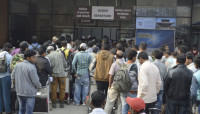Opinion
Youth and gender
Unemployment is a significant impediment to constructive participation of young people
Samira Paudel
The youth is the hope of our future”, said the famous writer Jose Rizal. However, the definition of youth varies across the globe. The International Labour Organisation (ILO) and UN have defined youth as those aged 15 to 29, while the World Health Organisation and Unicef define youth as those aged 15 to 24. The definition of youth differs from country to country as well. Whereas Jamaica defines youth as the population in the age group of 15-24, Pakistan defines it as the group of people between the ages of 15 and 29 years, and Kenya as the group of people between 18 and 34 years. In Nepal, the National Planning Commission defines youths as those aged 15 to 24, while the National Youth Policy defines it as those aged 16 to 24 years.
Youth can be seen as a group with high energy, aspiration and power to do something. But they do not form a homogenous group. They are from different ethnic groups, religions and of course genders. The only thing common among them is that they are on the path to adulthood. This stage of life is crucial in determining young peoples’ paths to achieving productive employment. Nepali youths make significant contributions to various sectors of the country,
but they also face many problems. The economy is not capable of creating productive employment for all those entering the
labour market. Unemployment is a significant impediment to constructive participation of young people in contributing to national development.
As patriarchy is still deep-rooted in the country, there are different challenges for girls and boys in Nepal. Young girls and boys often have different priorities, opportunities and constraints which shape their livelihood. In general, the challenges faced by girls seem to be more complex. Home is generally considered as a secure place for women to work in and the tasks assigned to them are said to not require particular skills or training. Even the ones that are working outside of their homes need to balance their professional and family life, which is difficult. Moreover, due to gender-based disparities, young women are disadvantaged when it comes to employment and education.
For young men, the situation is often different in the sense that they face less restriction, for example, in terms of mobility, workload and access to education and training. However, many young men may feel the pressure of society’s expectation that a man should provide support to his family.
For young women and men, their success in achieving what they aspire to often depends on factors outside their individual control—mostly social and political structures. Those at the bottom of the social and economic pyramid are especially vulnerable and need support. Without this support, the confidence level of young people could be shaken.
A very impressive example of the capability of the Nepali youths is their contribution after the earthquake last year. Youths in Nepal have played a crucial role in responding to the earthquake, from clearing rubble to mobilising their networks to support relief efforts. However, their contribution has not necessarily been recognised by the state. Neither has the state come up with concrete policies that can tap the potential of the youths, nor does it have plans to increase employment opportunities. In contrast, the state has been encouraging them to move abroad as migrant workers, which is a huge loss for a country like ours.
Paudel is gender coordinator at Friedrich-Ebert-Stiftung, Nepal




 7.12°C Kathmandu
7.12°C Kathmandu









%20(1).jpg&w=300&height=200)

